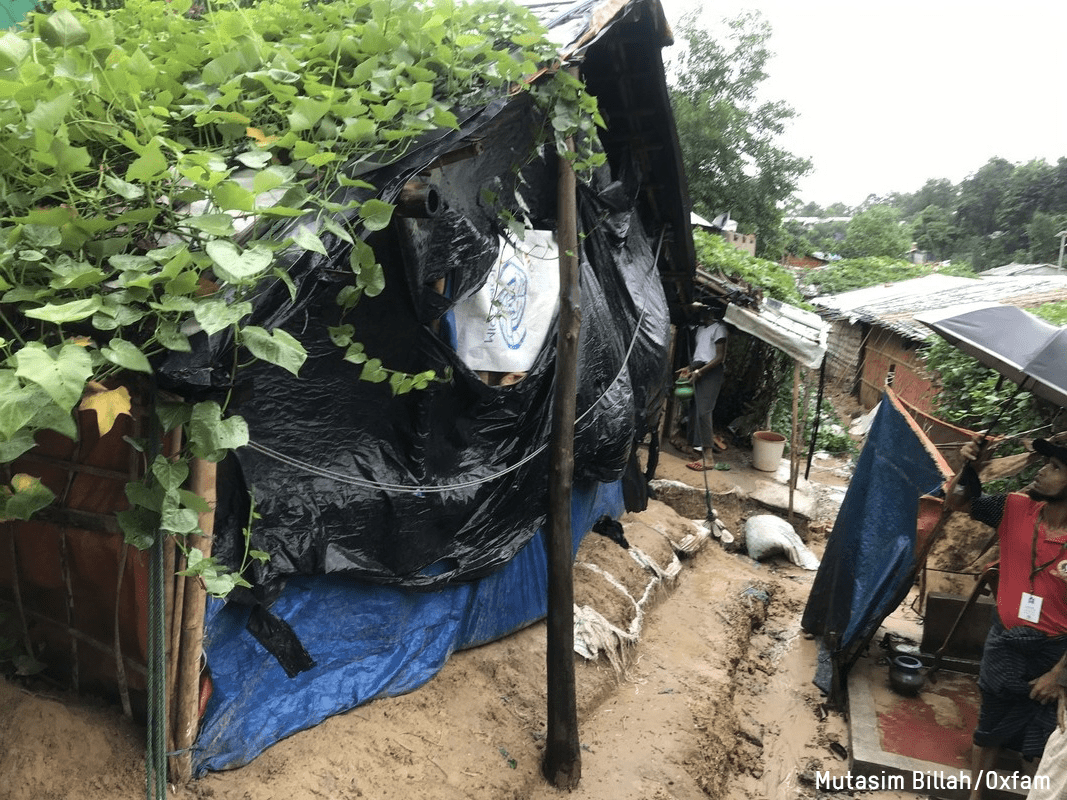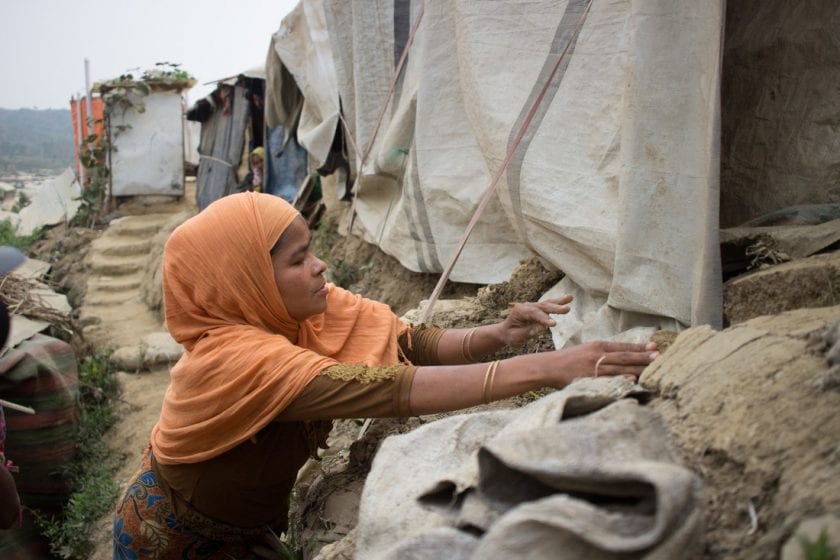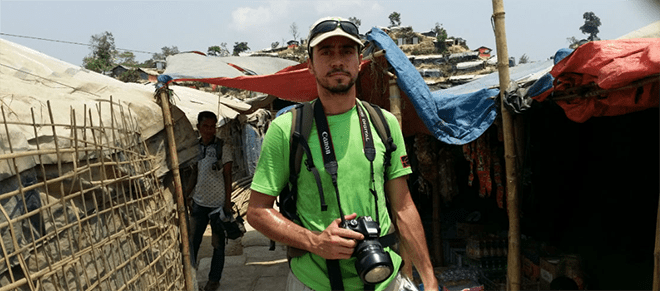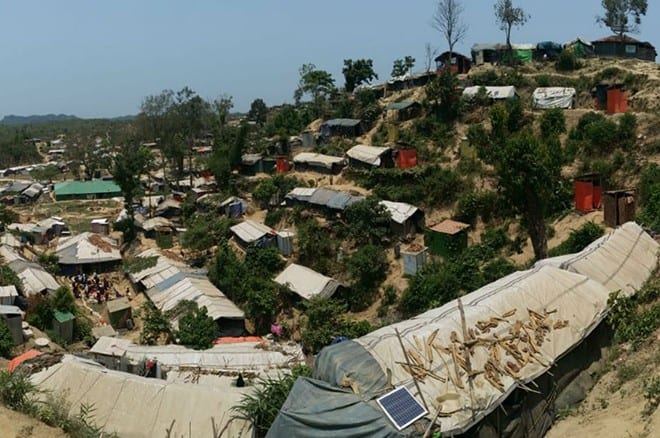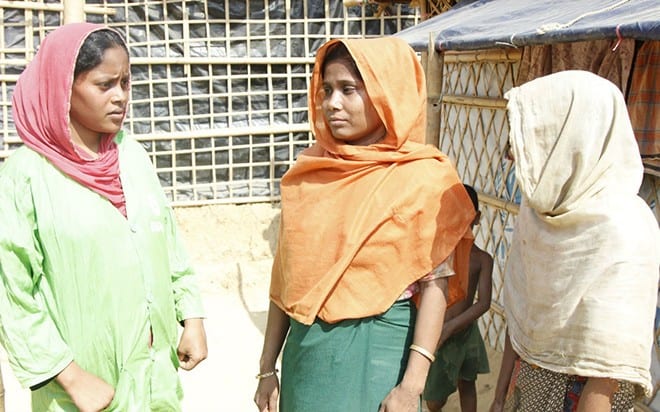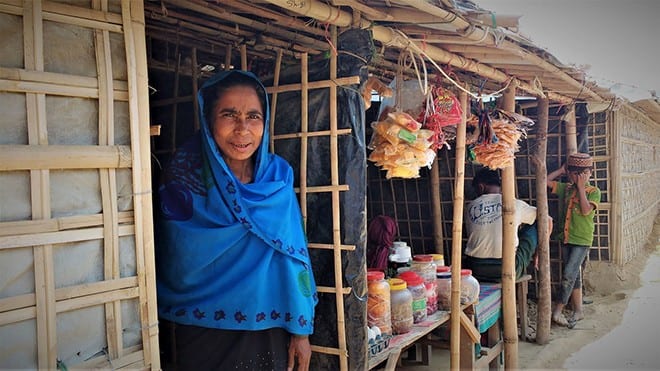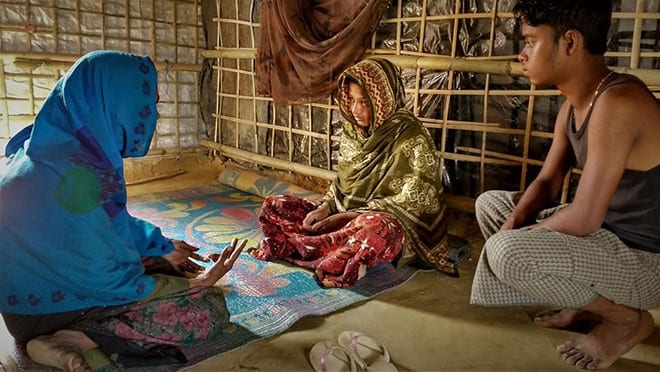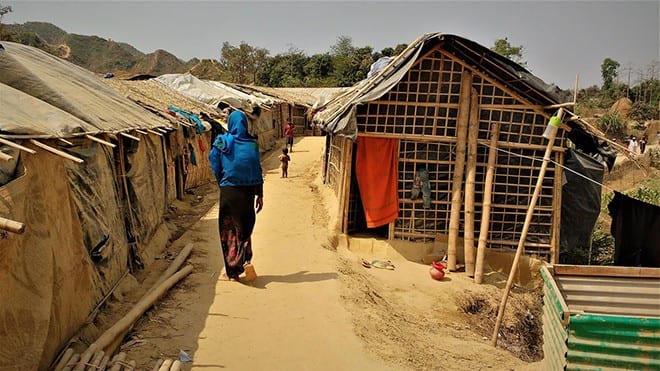
Key Facts
- Massive fires swept through the Cox’s Bazar Refugee Camps on March 22, 2021.
- The damage is significant and still being assessed.
- Preliminary reports say that 10,000 families (approximately 45,000 persons) were displaced.
- At least 15 refugees were killed. Hundreds of others were injured.
- Four camps have extensive damage. Thousands of shelters, offices, and other facilities were burned.
- Oxfam’s Rapid Response Team has been deployed and worked through the night providing water to help extinguish the fire. The team also provided drinking water, hygiene kits, and emergency latrines.
- Fencing around the camps impeded firefighting machinery and refugees attempts to escape the fire. • Humanitarians are urgently asking the authorities for: (1) improved phone/internet connectivity in camps, (2) to waive the restrictions on passes for NGO cars, (3) for access gates to be opened and fences taken down from roads.
A massive fire that swept through the refugee camps of Cox’s Bazar, Bangladesh, on Monday has left 10,000 families—roughly 45,000 people—displaced and in urgent need of food, water, and sanitation services, Oxfam warned today. The fire was yet another devastating blow to the Rohingya people who fled shocking violence and persecution in Myanmar.
The fire started on Monday at 4pm and spread rapidly for several hours in the densely populated camps, destroying thousands of bamboo and tarpaulin shelters, until government fire and rescue services managed to control the blaze. The damage is extensive and still being assessed, but early reports suggest that 15 people were killed, and at least 560 people were injured, while hundreds remain missing.
“The worst affected areas have been reduced to ash—the only things left standing are shelter foundations and bits of household metal like pots and sewing machines. The level of destruction is unlike anything our team has seen before,” said Enamul Hoque, who leads Oxfam’s Rapid Response Team.
“We are deeply concerned for the safety and wellbeing of the 10,000 families displaced by the fire. The blaze has destroyed critical infrastructure, including water stands and sanitation facilities. Refugee families are in urgent need of food, drinking water, and safe toilet facilities.”
Oxfam’s Rohingya volunteers were the first responders, followed by the multi-agency Rapid Response Team, which deployed immediately with water trucks—on standby for such emergencies—and rushed to the camps to help extinguish the blaze. The team also transported water in jerry cans to refugees in areas that the water trucks could not reach. Barbed wire fencing around the camps impeded both refugees’ ability to escape and the Oxfam response team’s ability to provide aid in time and at scale.
“The Rapid Response team worked through the night, setting up water tankers and installing tap stands to distribute emergency drinking water. The team also provided displaced refugees with hygiene kits and emergency latrines,” said Mr Hoque. “It will take time to repair water infrastructure systems, increasing the risk of sickness, particularly as the monsoon season approaches.”
Oxfam will also work with partners to distribute soap, food, and household essentials like solar lights.
The Cox’s Bazar camps are severely crowded with roughly 40,000 people per square kilometer. The 10,000 families displaced by the fire are now taking temporary refuge in other camps which are already densely populated, further heightening the risk of an outbreak of COVID-19.
In the wake of the fire, many families and children have been separated. A top priority in the coming days will be reuniting families and monitoring the safety conditions for those who have been displaced. As we know from past experience, women and girls bear the brunt of this type of crisis—often placing themselves at risk to find means to survive. Oxfam will continue to assess gendered needs and identify immediate solutions together with other humanitarian actors.
Notes to the Editor
- The Rapid Response team works in coordination with Bangladesh’s Department of Public Health Engineering (DPHE), the UN, and the Cox’s Bazar WASH sector.
- Oxfam New Zealand has been supporting women’s leadership and access to services in the camps since 2017, with funding from the New Zealand Ministry of Foreign Affairs and Trade.
Media Contact
Jo Spratt | Communications and Advocacy Director | Wellington, New Zealand | [email protected] | 0210664210
Nesrine Aly | Oxfam News Manager | Cairo, Egypt | [email protected] | +201222486964 / +447503989838
Lily Partland | Senior Media Coordinator | Melbourne, Australia | [email protected] | +61 418 118 687





